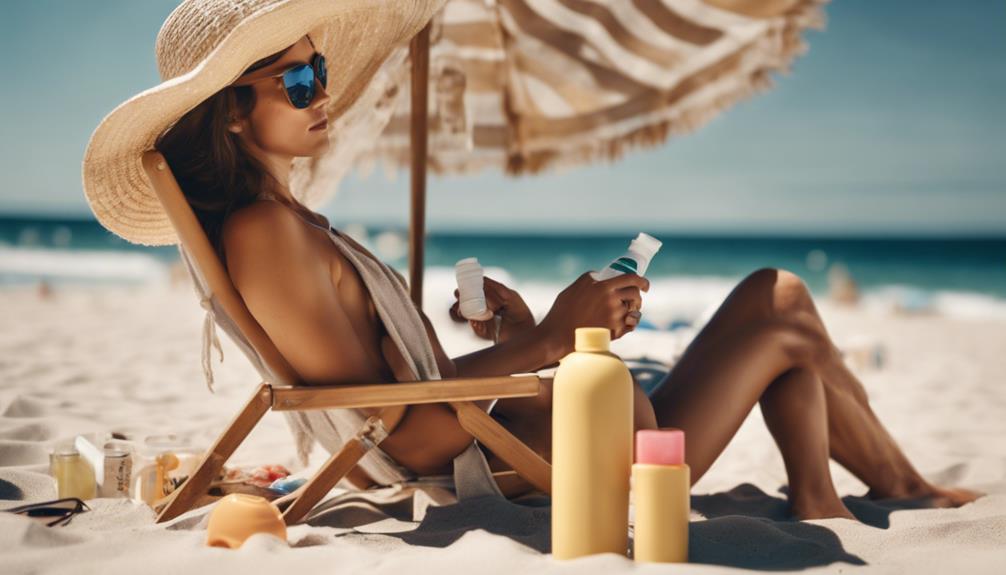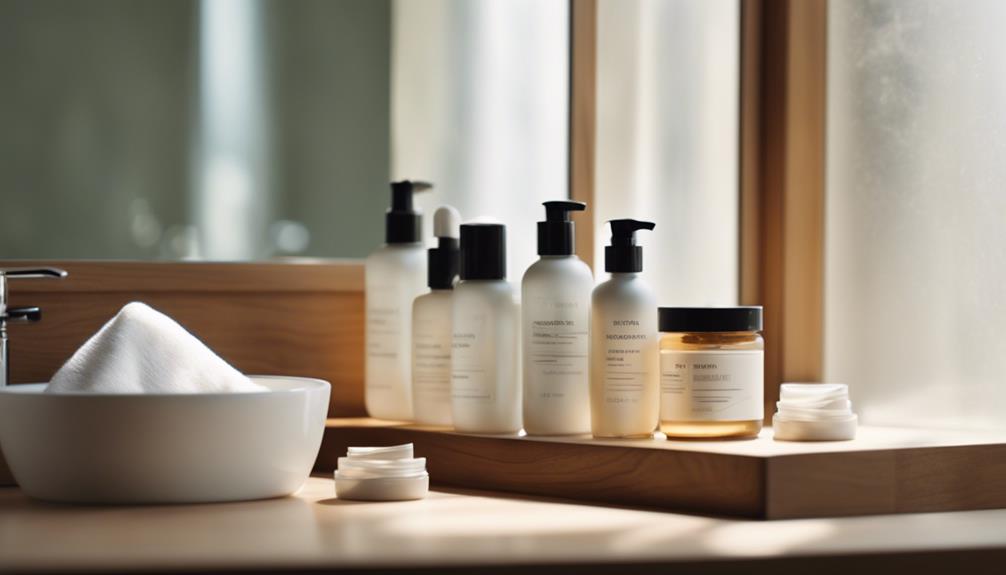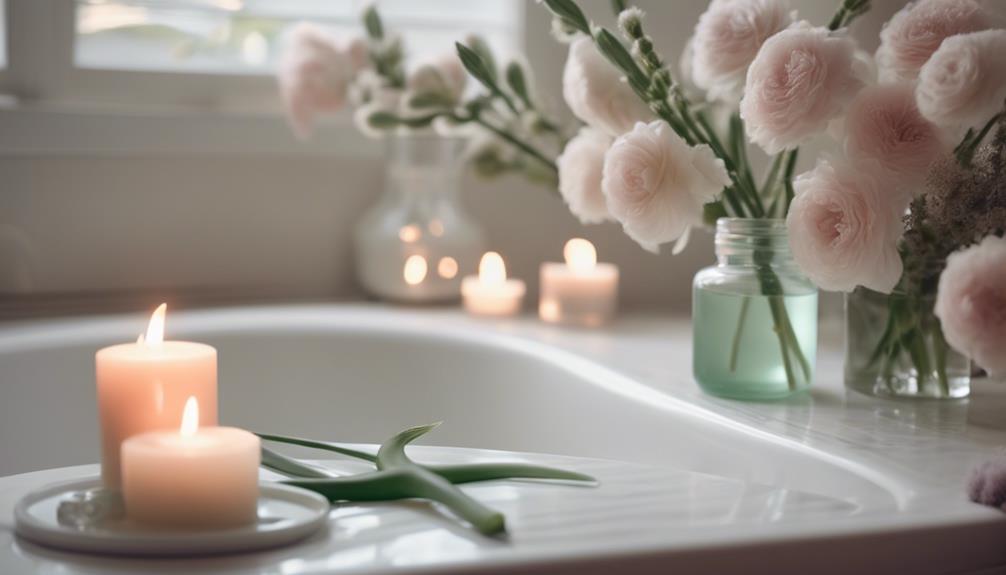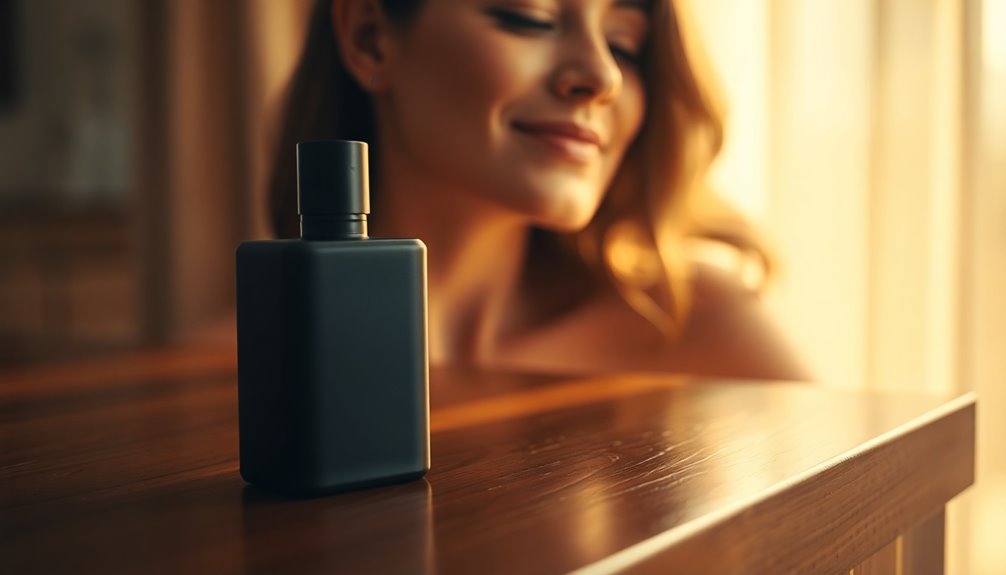When you’re on a mission for that perfect tan, safety has to be your top priority! Always remember to wear protective eyewear – UV rays can harm your eyes, leading to serious damage over time. Also, don’t forget about following salon guidelines; make sure to heed the advice of professionals regarding safe tanning durations based on your skin type. Opt for bronzers that contain hydrating ingredients like coconut oil to keep your skin looking radiant and healthy. And don’t forget about the UV index – it’s your ally in preventing overexposure. So, are you ready to shine safely? Stay tuned for more golden tips coming your way!
Key Takeaways
- Always wear protective goggles to shield your eyes from harmful UV rays during tanning sessions.
- Adhere to salon guidelines, including age restrictions and consulting staff for safe tanning practices.
- Choose bronzers with natural ingredients to keep your skin hydrated and promote even tanning results.
- Be aware of your skin type and UV exposure limits to prevent overexposure and skin damage.
Importance of Protective Eyewear
Wearing protective eyewear is essential every time you use a tanning bed to shield your eyes from harmful UV rays.
Think of your eyes as the windows to your soul; you wouldn't leave them unguarded during a storm, right? Those UV rays can cause serious long-term damage, like cataracts or even sunburned corneas. Ouch!
By using protective goggles, you're taking a smart step toward keeping your eyes safe and healthy. Plus, it's super easy—just pop them on before you tan!
And don't forget, having extra pairs handy is a great idea for those spontaneous tanning days.
Adhering to Salon Guidelines
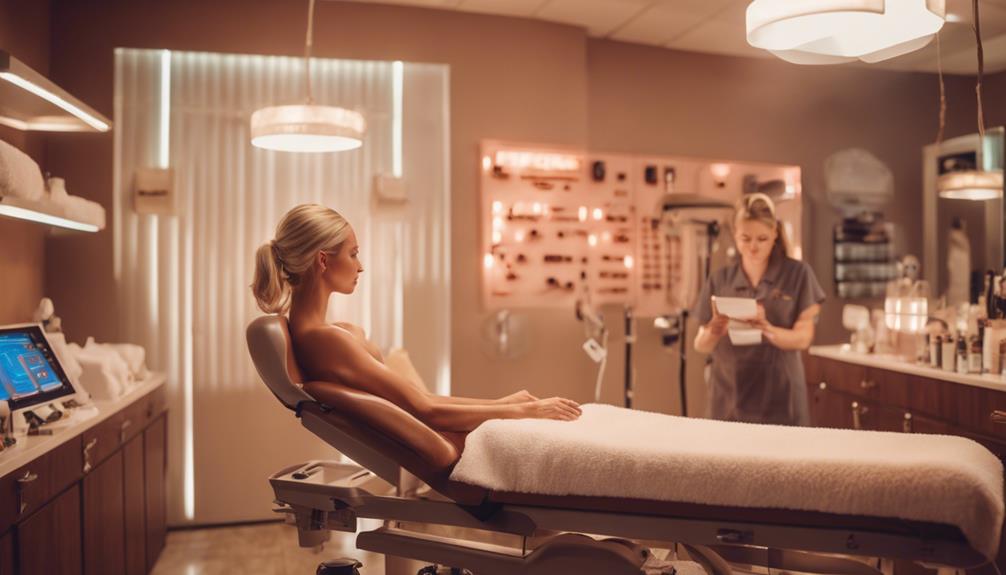
To guarantee a safe tanning experience, it's essential that you follow the established guidelines set by your tanning salon. Think of these rules as your tanning GPS, guiding you to a sun-kissed glow without detours into danger! Additionally, it’s important to always wear protective eyewear and to cover sensitive areas of your body. It’s also crucial to exfoliate and moisturize before a tanning session to ensure an even tan and prevent skin damage. These essential tanning hygiene tips will help you achieve a healthy and radiant glow while protecting your skin from potential harm.
Always check in with the staff; they know the ins and outs of safe tanning.
Don't forget to wear your protective goggles—your eyes are precious, and you wouldn't want to trade them for a tan, right?
Also, pay attention to legal age requirements; they're there for your safety!
Finally, listen to your skin—everyone's different, and what works for your friend mightn't work for you.
Choosing the Right Bronzer

When selecting a bronzer, prioritize products that emphasize skin hydration and contain natural ingredients for a safe and effective tanning experience. You want your bronzer to work wonders, not wreak havoc on your skin!
Look for lotions that promise hydration, as dry skin can lead to uneven tanning—yikes! It's like trying to paint on a bumpy canvas, right? Also, check for ingredients like aloe or coconut oil; they're like a spa day for your skin.
And hey, don't forget to test a little patch first to see how your skin reacts. Remember, you're aiming for a sun-kissed glow, not a pumpkin look!
Understanding UV Exposure Limits
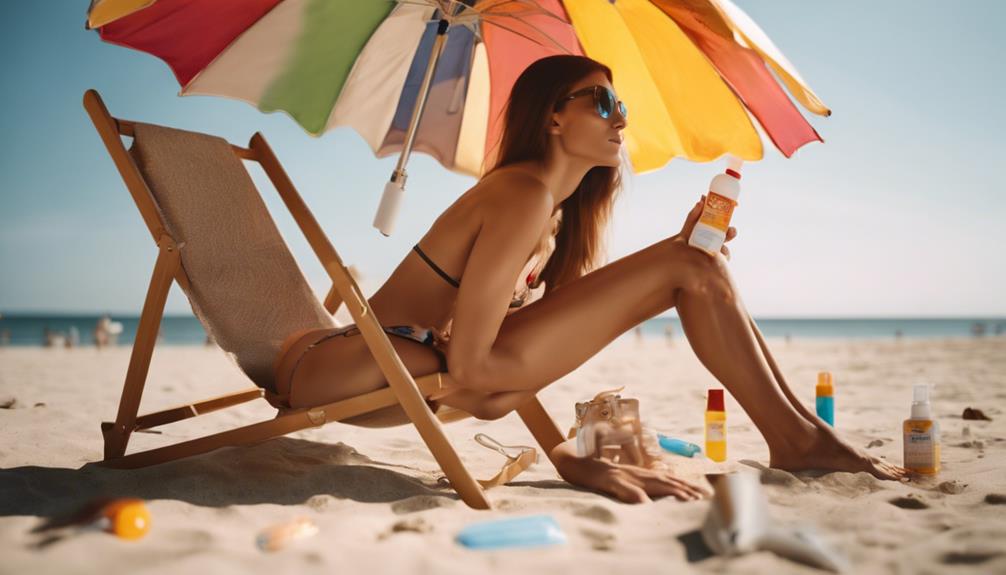
Understanding your UV exposure limits is essential for enjoying safe tanning while minimizing the risk of skin damage.
Think of UV rays like a pizza oven; too much time in there, and you'll burn! You need to know your skin type and how long you can safely tan without frying.
For fair skin, just 10-15 minutes might be enough, while those with darker tones can handle a bit more.
Always remember, even on cloudy days, UV rays are sneaky and can still harm you. So, check the UV index before heading out!
And hey, consider wearing protective goggles to shield your eyes, just like you'd grab sunglasses for a bright day.
Safety first means more fun in the sun!
Consulting Tanning Professionals
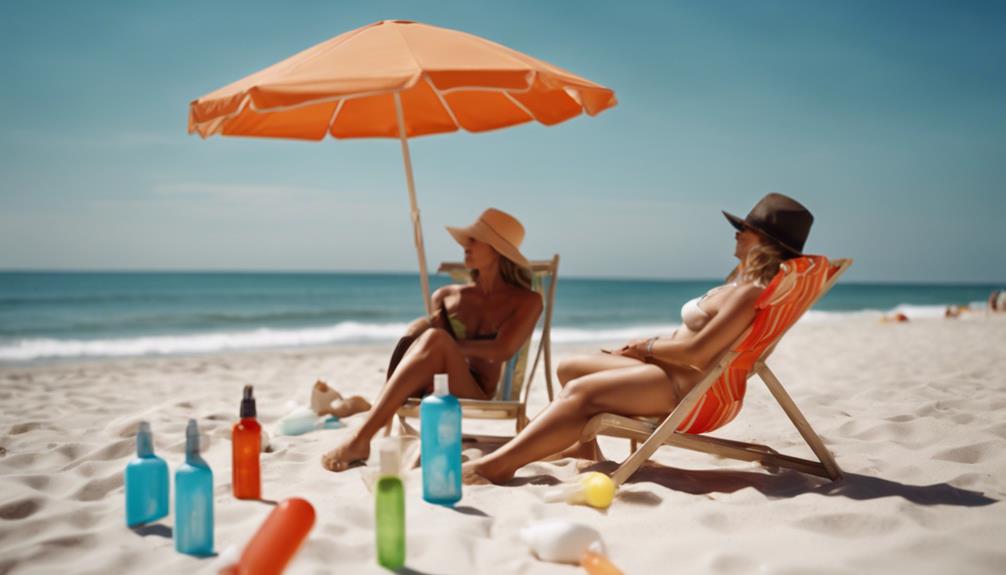
Consulting tanning professionals can provide valuable insights into your unique skin type and help you determine the safest tanning practices for ideal results.
Think of them as your tanning superheroes, equipped with knowledge about UV exposure and skin care. They can guide you in choosing the right tanning bed or product, ensuring your skin stays happy and healthy.
Ever wondered how long you should tan without turning into a lobster? These experts can help!
Plus, they'll remind you to wear those protective goggles, because, let's face it, no one wants to risk their eyes for a golden glow.
Frequently Asked Questions
How Often Should I Tan for Optimal Results?
Imagine a garden; too much sun wilts flowers. For ideal tanning results, you should tan every 3-7 days, allowing your skin to rest and develop color. Balance is key to flourishing, just like in nature.
Can I Tan if I Have Sensitive Skin?
If you have sensitive skin, it's best to approach tanning cautiously. Consider using a lower-intensity tanning option, and always test a small area first to avoid irritation. Consulting a professional can also help you find suitable solutions.
What Should I Do if I Get Burned?
If you get burned, cool your skin with aloe vera or a soothing lotion. Stay hydrated, avoid direct sun, and give your skin time to heal. If severe, consult a healthcare professional for advice.
Are There Any Alternatives to Indoor Tanning?
You might think about indoor tanning, but consider alternatives like self-tanners or bronzing lotions. These options give you that sun-kissed glow without the harmful UV exposure, keeping your skin healthy and radiant.
How Do I Choose the Right Tanning Bed?
When choosing the right tanning bed, consider your skin type, the bed's UV output, and salon reputation. Ask about safety protocols and maintenance to guarantee a safe, enjoyable tanning experience tailored to your needs.
Conclusion
So, as you gear up for your tanning adventure, remember: don't let your skin be a canvas for sunburn! Stay proactive by applying a broad-spectrum sunscreen with a high SPF, and reapply it often to keep your skin protected. For a radiant glow without risking UV damage, consider exploring safer sunless tanning tips like self-tanning lotions or sprays. These alternatives can give you that sun-kissed look while keeping your skin healthy and happy!
With protective eyewear, the right bronzer, and a chat with professionals, you can shine like the sun without the risks.
Think of it as preparing for a big game—strategy is key!
Embrace your glow responsibly, and you'll be the star of the beach without a worry in the world.
Now, who's ready to rock that bronzed look?
